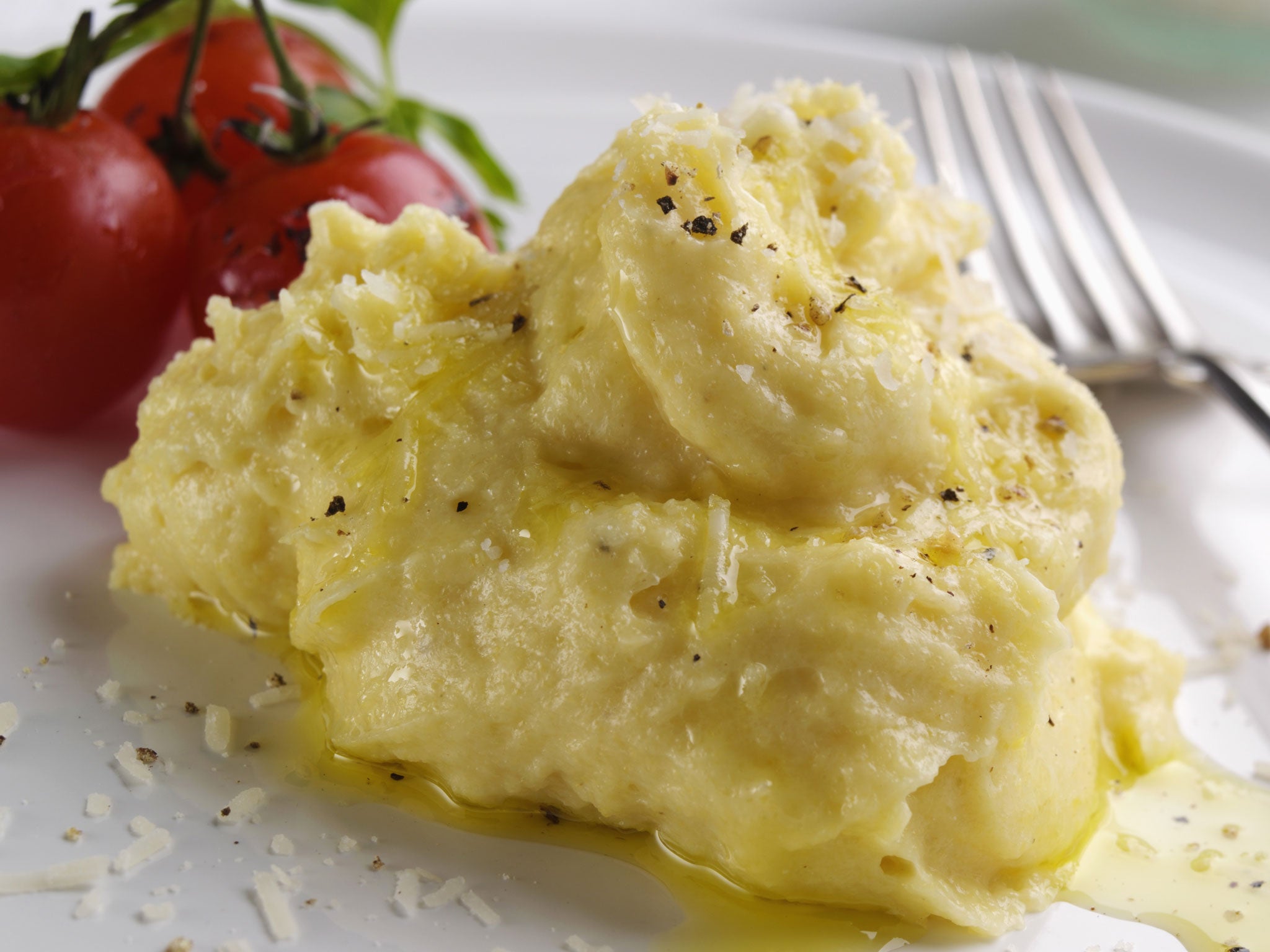Samuel Muston: A hug on a plate - my paean to polenta

Your support helps us to tell the story
From reproductive rights to climate change to Big Tech, The Independent is on the ground when the story is developing. Whether it's investigating the financials of Elon Musk's pro-Trump PAC or producing our latest documentary, 'The A Word', which shines a light on the American women fighting for reproductive rights, we know how important it is to parse out the facts from the messaging.
At such a critical moment in US history, we need reporters on the ground. Your donation allows us to keep sending journalists to speak to both sides of the story.
The Independent is trusted by Americans across the entire political spectrum. And unlike many other quality news outlets, we choose not to lock Americans out of our reporting and analysis with paywalls. We believe quality journalism should be available to everyone, paid for by those who can afford it.
Your support makes all the difference.Opening a new restaurant is often a quick way for rich people to lose money. It is a gamble opening your doors to the public, just like playing poker. But as with cards, there are ways to hedge your bets. The cautious restaurateur might tend towards well-worn concepts such as the burger joint, for instance, or the fried-chicken shop.
Braver souls, though, plough their own furrow. The owners of the newly opened La Polenteria in Soho are defiantly in the second camp, for this is the first restaurant in town dedicated solely to polenta.
If course, single-item restaurants are nothing new. They fill the high street and tend to do well for their owners (see aforementioned burger and chicken purveyors). But they don't usually serve something so divisive as polenta. You see, the slow-cooked dish of maize cleaves opinion like a Justin Bieber concert. You either love it or loathe it – and ever has it been so.
The steaming starch has been a diet staple since Caligula was in charge, and you can bet people still hated it back then as well. To some, it is merely mush, an inelegant mess which teeters too close to porridge. For others, such as Marcella Hazan, the Italian cookbook queen, eating it is "like receiving the sacrament". In Piedmont in northern Italy, they traditionally ate so much of it they were known as "the polentone". While in 19th century Paris, there was a society for its advancement, the ordine dei polentoni, which numbered Émile Zola and the painter Giuseppe De Nittis among its members.
You may notice that I dwell on its champions, rather than its detractors. That is because I adore polenta. Not just because it is full of iron, magnesium, phosphorus, zinc and B6; nor that it sustained our ancestors through pinching winters. But rather because, to me, it speaks of comfort, and relaxation, too.
Let me blunt: if you don't like it, you've probably never tasted proper polenta. Go to Bologna and try it with meaty ragu, you may fall in love. Or head to Venice, go all out, and order it with quail eggs and truffle. Or else just stay at home, in the comfort of your kitchen, and grill some cooked stuff with gorgonzola. Do what you want with it, just never eat the quick-cook stuff. It is fit only for tiling.
There are one thousand and one methods for making it at home. Some people counsel cooking it in milk, still others cream. But the most reliable method is the simplest. Bring a pan of water to the boil, gently pour in the maize (the ratio should be water to maize 5:1 for soft polenta; 4:1 for hard). Whisk it for five minutes after you have added it, then turn the heat down low.
Let it bubble gently. Stir every five minutes – don't let it stick to the pan. The way to find out if it is done is to taste it. When the grains are swollen and soft, it is ready. The rest is up to you. Grill it, mix it with cheese, stir in butter, or just eat it greedily in one sitting. The possibilities are endless.
Know this, though, it is a dish which knows no urgency. But that is half the pleasure of it. Seldom does the preparation of any food so light up a kitchen. The steam and the bubbles and the stirring – together they seem to wave away winter blues. Sure, it will take up your time, and a tiny bit of your concentration, but what you get in return is a hug on a plate and, on dark days like these, who wants more?
Join our commenting forum
Join thought-provoking conversations, follow other Independent readers and see their replies
Comments